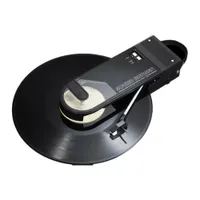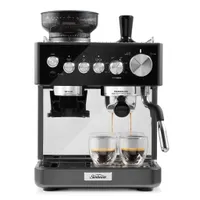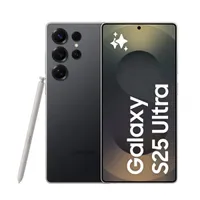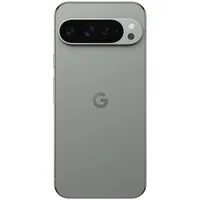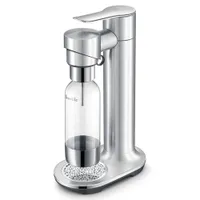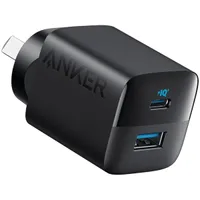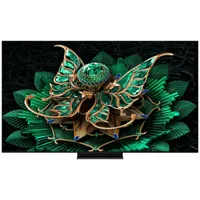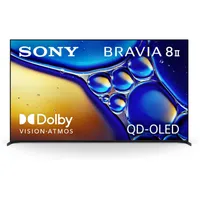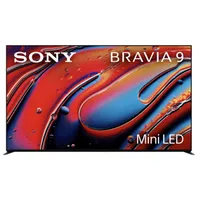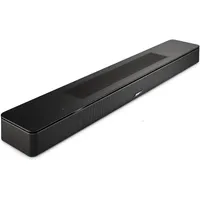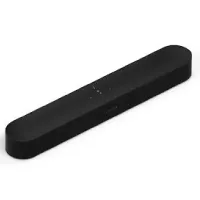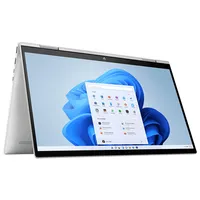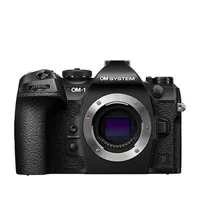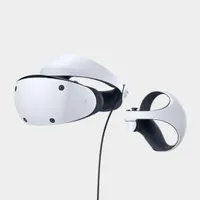EOFY sales 2025: the 25 best tax-time deals still available to buy
End of financial year sales may have officially come to a close – but the deals keep on rollin'
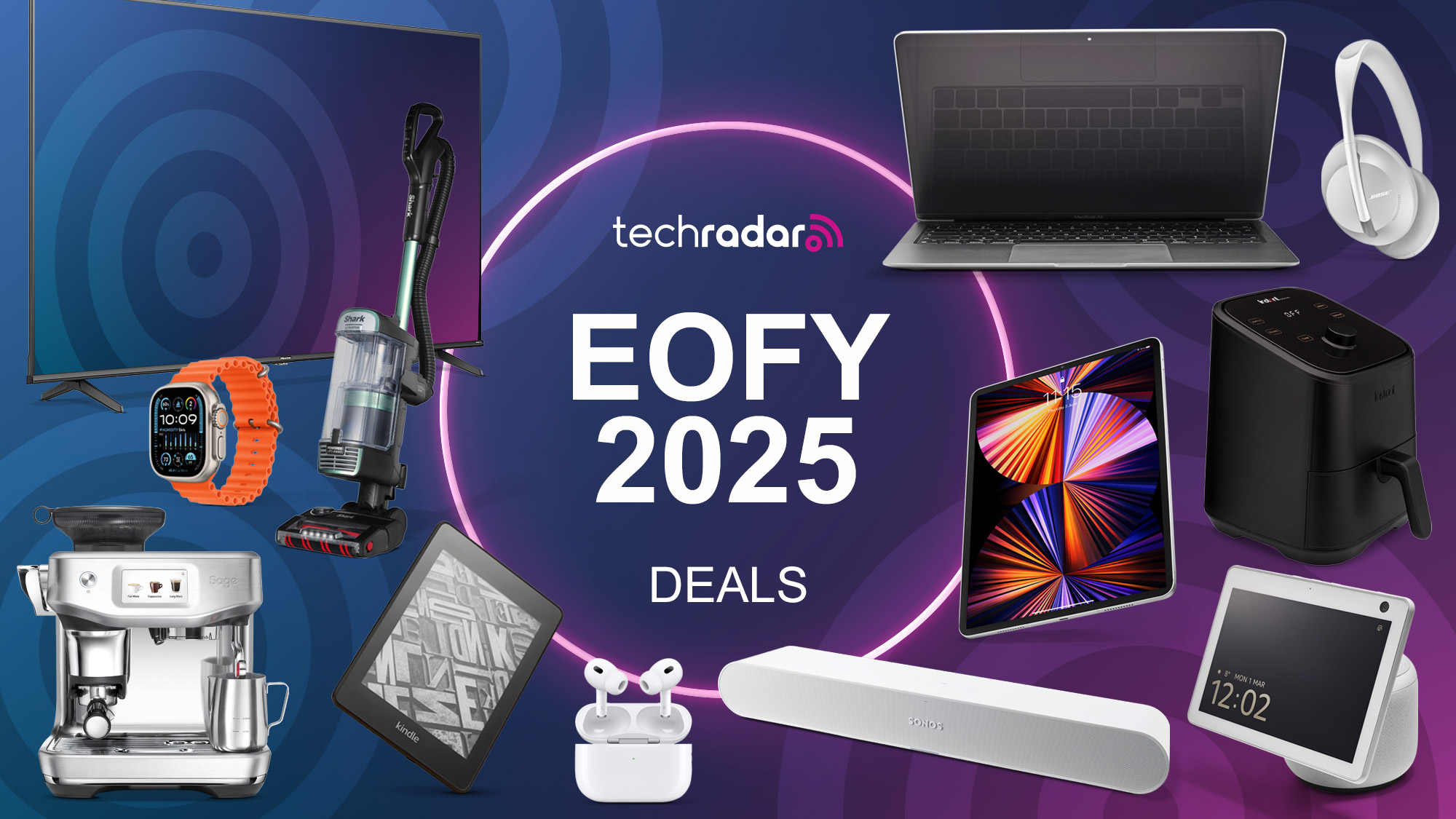
In what feels like a blink and miss it moment, we're now into July, which means the end of financial year sales in Australia have officially ended. Massive discounts popped up on top tech throughout the month of June, but now it's time to say goodbye. Or is it?
We've sifted through all the incredible deals we've seen in the last 30 days and have found 25 of them still hanging around, waiting to be snapped up. There's a good variety on offer, too, with the likes of mobile phones, coffee machines, headphones and TVs all still getting the discount treatment.
Other incredible discounts we saw throughout June included some record-low prices on the likes of the Bose QuietComfort Ultra Headphones and Breville the Oracle Touch, both of which have plummeted to new lows thanks to our exclusive discount codes. The Bose deal has unfortunately ended, but you can still pick them up with a decent saving direct from the maker.
Check out our expert-approved selection of EOFY deals still live and don't forget, Amazon Prime Day kicks off next week for yet more sales mayhem.
EOFY 2025 top retailers
- Amazon: daily deals on tech, toys, appliances and more
- Appliance Central: massive discounts on TVs and appliances
- Appliances Online: save on TVs, whitegoods, small appliances and more
- Bose: up to 30% off + extra 10% off with coupon savings
- Breville: up to AU$600 off + extra 10% off with exclusive code BREVFUTURE10
- Dell: price-match guarantees through June
- Desky: tax-time savings on office chairs, desks and more
- Dyson: save up on vacuums, purifiers and hair tools
- eBay: discounts on gaming, tech, TVs and more
- HP: up to 45% off select laptops, accessories and more
- JB Hi-Fi: save on big-ticket tech items, plus office furniture
- KitchenAid: up to 30% off stand mixers, coffee machines and more
- Kogan: Up to 65% off top tech this EOFY season
- Lenovo: up to 43% off select PCs and more
- Myer: up to 50% off in Stocktake Sale on home items
- Samsung: deals on phones, headphones, TVs and more
- Ted's Cameras: discounts on cameras, lenses and photographic accessories
25 Best EOFY Deals
Save AU$600
A little way off the lowest price we've seen, 39% off the Dyson Gen5detect is still worth taking notice of, considering how powerful it is. It offers excellent battery life too, and this bundle also gets you the Fluffy Optic cleaning head that illuminates invisible dust on hard floors to ensure you can capture every last mote.
Need more bin capacity for a larger home? The Dyson Gen5outsize is also discounted – 36% off, down to AU$1,049 from AU$1,649.
Superloop NBN 1000 | 860Mbps TES | AU$85 p/m (first 6 months, then AU$109 p/m)
Official EOFY NBN deals have been few and far between this month, making this from Superloop all the more attractive. It's for the telco's fastest NBN 1000 plan, and it's received a huge AU$144 discount over 6 months, bringing its introductory cost down to a figure lower than many plans that are over 17x slower! The ongoing cost is also below the current national average.
• AU$85 total minimum cost
• AU$1,164 first year cost
• AU$1,308 ongoing yearly cost
Exetel One | 500Mbps | AU$80p/m
Exetel has dropped a brand new NBN 500 plan, a couple of months ahead of the expected September roll out across the wider NBN landscape. At just AU$80p/m, it presents itself as exceptional value, coming in less than Telstra's 25Mbps plan that's 20x slower! You will need an FTTP or HFC connection at home, but if you do, this is a plan worth your attention.
• AU$80 total minimum cost
• AU$960 yearly cost
Save AU$221 with Price Beat
A record player with a twist, the Sound Burger might look like a novelty item, but our colleagues at What Fi-Hi? were pleasantly surprised by its performance. The combination of clever design and ease of use, make it an excellent entry into the world of vinyl. Connect it to a Bluetooth speaker for music on the go, or an amplifier and speaker system at home for glorious sound output.
Save AU$289.90 with code
We said in our De'Longhi La Specialista Touch review that this is "one of the best espresso machines you can buy" thanks to its compact dimensions, great looks and the fact it's semi-automatic, meaning you can have as much, or as little, input into your coffee as you'd like. The best part? No matter which route you choose, you'll be rewarded with a delicious coffee and expertly-frothed milk. Better yet, use the checkout code TECH10 to save more than just the listed AU$200.
Save AU$112 with Price Beats
We're getting this machine from Aussie company Sunbeam in for review soon, and on paper it looks like a fantastic, affordable alternative to the 'big' names. The headline feature is a thermometer built into the steam wand and four temp settings for various dairy milk alternatives. It also sports a built-in conical burr grinder for precision grinding, and it also has easy, one-button cleaning. To get the best price, make sure to hit the 'price beat' button right under the price on The Good Guys website.
Save AU$400
The flagship smartphone from Samsung, the Galaxy S25 Ultra is one of the best phones in Australia, fitted with our favourite array of cameras and a gorgeous, massive screen. In our Samsung Galaxy S25 Ultra review, we awarded the phone four and a half stars and gave it a TechRadar Recommends seal of approval.
This discount applies across all colourways including Samsung store exclusive colours (although some are now out of stock) along with 512GB and 1TB models.
Save AU$500
This is one of our favourite Android handsets here at TechRadar and its slightly bigger size over the standard Pro model is no bad thing. It earned 4.5 stars in our Google Pixel 9 Pro XL review, standing out for its display and battery. If you've been eyeing it, JB Hi-Fi is offering AU$500 off all the storage and colour options right now via the same listing.
Save AU$103
Breville's SodaStream alternative is a good-looking machine and it can fizz up a heck of a lot of drinkable liquids, from juices to wine. This allows you to make all sorts of cold beverages, including cocktails, and that's what gives it a leg-up over many of its competitors. Available in two colourways for AU$196 – Brushed Stainless Steel and Truffle Black – and just AU$2 more for the Sea Salt. We've also spotted some extra coupon savings available on this listing, bringing it down to AU$181 at the checkout.
Save AU$211
Ever cooked with steam in an air fryer? Now you can with this Philips two-drawer air fryer. In our Philips 5000 Series Dual Basket XXL Air Fryer Steam review, we said that it cooks everything really well, but there are some caveats to keep in mind when it comes to the use of steam. Still, it's absolutely worth the investment if you want to upgrade from an old air fryer.
Save AU$279.90 with code BREVFUTURE10
We admit we haven't reviewed this pizza oven ourselves, but our colleagues at Tom's Guide gave it a wonderful 4-star rating. Their biggest gripe? The cost. This exclusive deal fixes that.
This indoor pizza oven acts just like the outdoor version, reaching up to 400°c to create a direct, intense heat that ensures a perfect slice every time. Looks can be deceiving, though, as this appliance will take up a microwave-sized portion of countertop space and weighs around 15kg.
Save AU$10
This neat little charger is a fine substitute for those you've already got lying around your house. It offers USB-A and USB-C ports and is capable of fast charging most base model phones from Apple, Google and Samsung. It won’t achieve the maximum wattage requirements of fast charging on more high-end models (such as the Google Pixel 9 Pro XL at 37W, or the Samsung Galaxy S25 Plus/Ultra and iPhone 16 Pro/Pro Max at 45W), but it’s still a neat and cheap charger to have, especially as a travel solution.
Save AU$225
This sonic electric toothbrush launched in Australia in late-2024 but, admittedly, at a high price. Fortuantely, this huge 50% discount makes it much easier to stomach. It's the smartest, most talkative electric toothbrush money can buy. In our five-star Oclean X Ultra S review, we called it "chatty" and "clever" as it uses bone-conduction tech to provide vocal feedback in real time so you brush exactly you ought to. It's cutting-edge stuff in oral hygiene and you'll get three replacement cleaning heads in the box too.
Save AU$101
This Dyson Airwrap dupe went viral as soon as it was announced, offering excellent value even at full price. With a 25% discount, you get a full styling kit for all hair types! It can even be used a standalone hair dryer if you necessary. It will dry and style your hair for a lot less money than a Dyson, but it does make an annoying keening sound when in use.
Also available directly from Shark for AU$299.99.
Save AU$281.01
It's our favourite budget vacuum cleaner, taking up a spot in our best cordless stick vacuum buying guide even though we've not been able to test it ourselves. User reviews are glowing though, and we trust the people who love this machine. For quick and daily vacuuming, this is great and excellent value despite not being at its all-time low price of AU$237. Make sure to click the coupon to get the full discount.
Save AU$910
Utilising TCL’s latest QD mini-LED technology, the C7K is a premium yet affordable TV that should suit most Australian homes. High brightness, vibrant colours and deep blacks promise to elevate your home movie nights, while a built-in Bang & Olufsen speaker system could make you think twice about investing in a soundbar.
Save AU$1,300
Announced in April and been available on shelves only since May, this TV is very fresh indeed. And while we haven't done a thorough test, one of our colleagues got to see it in person and says it could be a "masterpiece". It promises superior images than many of the previous Sony TVs before it, and this discount makes it quite the catch.
Save AU$1,700
If you want a bright TV, you can’t look past the Sony Bravia 9. It’s a true master of its craft, capable of producing stunning colours, insane brightness and thanks to a new processor for this model, it exerts expert control over images.
Available sizes and best prices:
• 75-inch: AU$6,995 AU$5,295 at JB Hi-Fi
• 85-inch: AU$7,995 AU$5,995 at JB Hi-Fi
Save AU$264.49
The latest version of Bose's compact soundbar impressed us in our Bose Smart Soundbar review. It delivers an overall good sound that will elevate your viewing experience in smaller rooms, especially with its Dolby Atmos processing. It's stacked with extra features, including voice control. Bass could be a bit better, but overall this is a solid choice. Just make sure to grab a unique Bose coupon code (the first option on the linked page) and enter it at the checkout to get the deal price here.
Save AU$204
The second-gen, five-star Sonos Beam soundbar comes with Dolby Atmos support, HDMI eARC compatibility and an updated design. It's compact, too, so it's a good choice if you're tight on space but still want a wide soundstage. And, being a Sonos product, it also works wonderfully for music playback and can be added into a wider multi-room system. Also available in white.
Save AU$485.50
The Dell 16 Plus launched at AU$2,600, then dropped to AU$2,099 not long after, then AU$1698.40, and you can get it for AU$1,613.50 using the code DELLAU5% at checkout. That's not bad for this powerful laptop – especially since it has a 2560x1600 display, plus extras like Thunderbolt 4 USB-C and Wi-Fi 7.
Save AU$1,589.05
Ignore the inflated RRP, but for the spec, this is a decent price for a versatile 2-in-1 HP Envy x360. It features an efficient Intel Ultra 7 155U CPU along with 32GB of RAM and 1TB of storage. Plus, of course, a 1200p 16-inch touchscreen that conveniently folds through 360 degrees. Use code FUTURE5 at checkout to get the full discount.
Save AU$919.85
The Lumix S9 is Panasonic's smallest full-framer and is a boon for videographers. You get superb 6K video recording with very effective image stabilisation and Real Time LUTs at your fingertips. Panasonic's custom colour profiles are incredible, plus it also benefits from a new MP4 Lite format for 4K videos that are smaller and quicker to process than MP4. The price here gets you an 18-40mm lens included, plus you can redeem a free Anker powerbank and SanDisk Extreme Pro 256GB V30 card via redemption from Panasonic.
Save AU$976
This micro four thirds camera is a real marvel. We were so impressed with it that it scored 4.5 stars in our OM System OM-1 Mark II review. It's image quality is par excellence but its standout features are its superb stabilisation and the built-in graduated ND filters. It's a serious little camera for the serious photographer and is now at the cheapest it's been this month. This has gone up in price quite a bit within the past couple of days, so you may want to be quick to snap it up in case it goes up again.
Save AU$315.95
It has dropped just below AU$500 before, but this is still a much more affordable price for the PSVR 2 headset. If you've been reluctant to fork out nearly a grand for a brilliant-albeit-patchily supported peripheral, now might be the time to bite. If you've already got a PS5 in the house, this is probably the best way to game in VR.
EOFY sales 2025: key information
When are EOFY sales 2025?
Australia’s end of financial year is June 30, and the EOFY sales typically start on June 1. In recent years, several major retailers have started offering their EOFY sales even earlier, with a few tempting discounts to lure shoppers by mid May. The best EOFY deals will arrive in June though, and don’t expect to see all retailers coming out with month-long sales.
However, some retailers' EOFY sales will run for an entire month, and that’s what makes EOFY deals different from most other sale periods. They can carry on for a much longer time period (the entirety of June), while other events like Click Frenzy only run over 53 hours.
What are EOFY sales?
With the end of financial year for individuals and businesses falling on June 30, retailers can take advantage of the lead up to shift older stock and make way for new items, all to get their books in the best possible shape.
The EOFY sales can incorporate almost anything, from tech items like laptops and TVs to discounted phone and NBN plans. Not to mention flights, cars, clothing and large home appliances. One of the best bits about EOFY sales is that if you’ll be using the item for work-related purposes, you could claim it back on tax in a matter of weeks.
Are EOFY sales worth it?
The EOFY sales are one of the biggest sale periods in Australia, only rivalled by the likes of Black Friday and Boxing Day. EOFY sales are typically a good time of year to buy a new laptop or TV, as these are some of the big-ticket items to go on sale throughout June.
As mentioned above, one of the biggest benefits of the EOFY sales is that many discounted items will be tax deductible for some shoppers. Think monitors, mice, webcams and computers – if you need these products for work, hold onto your receipt and be sure to claim at tax time.
EOFY sales 2025: shopping tips
There's always a lot to shop during Australia's EOFY sales, making it hard to figure out if something is a genuine bargain or not. Follow our simple advice below and you might just hit the jackpot this June.
1. Keep an eye on price history
One of the main reasons to prep ahead of time before a big sale is so you can not only make your shopping list, but also keep an eye on the price history of what you're after in the lead up to the EOFY sales. This will help you figure out how much you should spend on a particular item.
2. Figure out what features you're after
It sometimes helps to know what features on a particular tech item are important to you as it will also determine how much it will cost you. New products keep showing up with fancy features you may not need or use, so opting for an older model might save you a chunk of change. For example, do you need a 4K OLED screen on your laptop or will QHD do? The latter will be cheaper and still get you a great display.
3. Consider a different brand
You might have your heart set on an LG TV, but you might get better value out of a similar-specced Hisense or TCL. So be flexible, as that can save you even more money during EOFY. Similarly, if you've had your heart set on the latest Dell XPS machine, you might find an HP or Lenovo alternative that's cheaper and provides you with all the power you need to get your work done but at a lower price.
4. Do some research
Finding out more about an expensive tech product before you buy could save you some heartbreak down the line. Before the sale starts, do some research on the item – read reviews published on trusted publications, like TechRadar, and also see what other users have to say.
5. Don't spend on extended warranties with little value
Manufacturer warranties in Australia are typically only a year or two, so some retailers offer you an extended warranty – for a price. It's best to make sure you will get some value out of this by reading the fine print as an extended warranty can just be an easy way for the retailer to make a fast buck. Remember, you are protected under the Australian Consumer Law, so it's always good to know what rights you already have before dropping cash on extended warranties you may never use.
EOFY sales 2025: best deals from last year
Unsure what to expect when the EOFY 2025 sales hit? We've picked out a few of our favourite deals from last year to give you an idea.
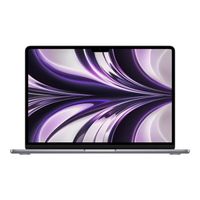
2022 Apple MacBook Air (13.6-inch) | M2 / 8GB RAM / 256GB SSD | AU$1,599 AU$1,349 at JB Hi-Fi (AU$250 off)
The EOFY sales usually represent one of the best chances to snap up a MacBook model for less, as was the case with this 2022 version at JB Hi-Fi. Whether this means we'll see 2023/2024 models get the discount treatment this year remains to be seen, but we'll be keeping our eyes peeled.
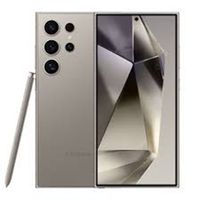
Samsung Galaxy S24 Ultra (256GB) | AU$2,199 AU$1,899 at Samsung AU (AU$300 off + AU$300 bonus trade-in credit)
Samsung's flagship phone hadn't long been released in Australia when the EOFY sales came calling, but the company itself dropped some pretty tempting offers. This one, for example, not only slashed AU$300 from its price, but you could also save an extra AU$300 when trading in an old device. The Galaxy S25 Ultra would be a few months old by the time EOFY sales start, so we could well see something similar for the latest flagship.
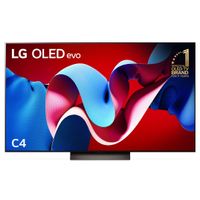
LG C4 OLED TV (55-inch) | AU$3,299 AU$2,180 at Appliance Central (AU$1,119 off)
TVs are always a hot-ticket item during EOFY sales as retailers look to offload old stock to make room for all of the year's newest releases. The price of this LG C4 OLED actually dropped below the AU$2,000 mark during the sales event, pretty incredible considering it was only released a few months prior. Will the same happen with the forthcoming LG C5? We can only hope.
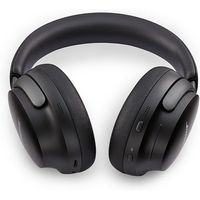
Bose QuietComfort Ultra | AU$649 AU$499 on Amazon (AU$150 off)
Amazon doesn't officially hold an EOFY sale, but it's not uncommon to find the retail giant matching prices. That was the case with Bose's excellent noise cancelling headphones. We've seen them drop slightly lower in price on occasion since, so we reckon a bigger discount later this year could be on the bingo card.
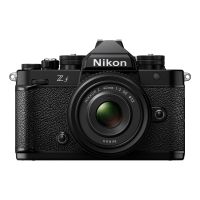
Nikon Zf with 40mm f/2 lens | AU$3,989 AU$3,191.20 at digiDirect eBay store with code (AU$797.80 off)
We're always on the lookout for stunning camera deals during any major sales event, and the previous EOFY sales served up some truly incredible options. This deal on the Nikon Zf is a great example, with the overall price including a lens undercutting the regular list price of the body only.
Sign up for breaking news, reviews, opinion, top tech deals, and more.

While she's happiest with a camera in her hand, Sharmishta's main priority is being TechRadar's APAC Managing Editor, looking after the day-to-day functioning of the Australian, New Zealand and Singapore editions of the site, steering everything from news and reviews to ecommerce content like deals and coupon codes. While she loves reviewing cameras and lenses when she can, she's also an avid reader and has become quite the expert on ereaders and E Ink writing tablets, having appeared on Singaporean radio to talk about these underrated devices. Other than her duties at TechRadar, she's also the Managing Editor of the Australian edition of Digital Camera World, and writes for Tom's Guide and T3.
- Max LangridgeStaff Writer
You must confirm your public display name before commenting
Please logout and then login again, you will then be prompted to enter your display name.



